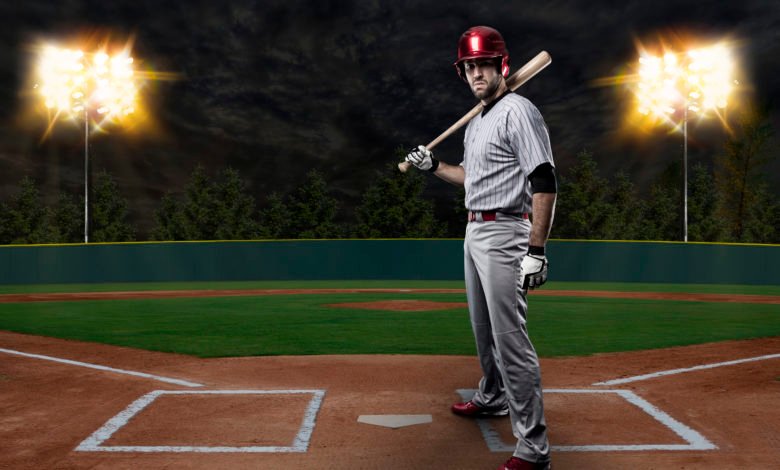
One of the most well-liked and entertaining sports to watch is baseball, but it raises the question of whether the MLB has a dress code. All members of the MLB, including managers, physios, players, and other team staff, are bound to wear the traditional custom baseball jerseys and other gear that is regulized by the MBL authorities.
The MLB’s dress code instructs that players wear their custom baseball jerseys. At least 50% of their shoes must be of the team’s colors, a tuck-in shirt, and the team hat. Tradition dictates that coaches wear a team uniform but can also don a team jacket or sweater.
This blog will cover the MLB league’s dress codes, common misconceptions regarding what MLB players must wear, special dress codes for management, and a few additional dress requirements.
MLB Rules To Follow When Designing Custom Baseball Uniforms
MLB players are required to adhere to a strict dress code that includes wearing the team’s provided slacks and a belt to hold their custom baseball jerseys in place, refraining from wearing anything that might be mistaken for a baseball or a bat by the opposition, and maintaining their clothing in good shape. Additionally, players cannot switch out their shoes while jogging the bases.
So, here are some detailed guidelines on the MLB player’s dress code:
- MLB players must keep their shirts tucked in when playing a game. MLB Static cites this regulation as one of the key elements of keeping a polished appearance on and off the field. Players must tuck them in to keep their shirts tight and organized during the game.
- Catchers and competitors in the home run derby may wear their caps backward, but players must always wear them facing forward. A hat that faces the front maintains uniformity, much as coordinating hockey or football helmets. To avoid the sun and observe tradition, the majority of players prefer to don caps.
- Their team’s primary colors must cover the exterior of their shoes to a minimum of 50 percent. Because it prohibits athletes from donning bright, vivid, or otherwise distracting color combinations, SI includes this special rule. They may cause problems for their rivals, but it also makes them appear unprofessional.
- For uniformity, all undershirts must match the team’s colors. The undershirt must match the rest of the outfit and custom baseball jerseys, even if it extends beyond the boundaries of the uniform. Although several teams have particular guidelines prohibiting undershirts from showing, the league does not have a universal dress code.
- Baseball players’ clothes must include a belt. These belts prevent the pants from sagging and the custom baseball jerseys from untucking. They maintain uniformity in the team’s appearance as well. MLB players need to wear the designated color scheme since the belts frequently match the team’s primary color.
- While running bases in MLB, players cannot change their shoes. Players cannot change their shoes while running from base to base under the Collective Bargaining Agreement (CBA) terms.
As you can see, MLB players are significantly more governed by the sport’s clothing code than other competitors. They are not the only ones who need to pay attention to what they wear to prevent fines and suspensions. Continue reading to learn what the coaches must wear.
Do MLB Coaches Have To Adhere To A Specific Dress Code?
MLB coaches must adhere to a dress code that requires them to wear team colors and frequently team outfits. Coaches can wear sweaters or jackets over the uniform if they stick to the team’s primary colors. Overall, MLB coaches must maintain a pristine appearance in their attire, just like the players do.
Here are a few guidelines that all MLB coaches need to follow:
- Coaches must dress in uniform if they wish to be on the field. Coaches are also team members and subject to the same regulations. According to the MLB regulation, any player or coach must adhere to this dress code while on the field.
- MLB coaches cannot wear ripped clothing, torn shoes, etc. The main focus of baseball dress codes is upholding tradition and maintaining professionalism. Nobody looks good in rugged, worn-out attire, yet the coaches are supposed to be the team’s captains. If they don’t appear professional, the team will be led astray.
- Anything resembling a baseball, bat, or the opposing team’s colors is prohibited for the coaches to wear. These unwanted diversions may change the course or result of the game. The coach’s undershirt cannot be visible or display anything approximating these objects, just like the players’ undershirts cannot.
- The majority of coaches have comparable or identical dress codes to players. Technically, managers and coaches are a part of a team. They used it to perform on the ground with the players many years ago, largely because of the uniform resemblances and their participation on the field.
What Other Dress Code Requirements Exist?
Sportswriters must also adhere to other dress code requirements, such as wearing formal attire, shoes covering all or nearly all of their feet, and shorts or slacks long enough to conceal their legs. These guidelines were established for hygienic concerns when speaking with athletes in the locker room to uphold the sport’s professionalism.
The interviewers’ and writers’ clothing codes are also broken down in fresh and exciting ways. They must, for example, wear shorts and shoes that, to the greatest extent possible, conceal their legs and feet. Although most staff members favor this reform, there has been some resistance because the writers don’t usually directly represent the league.
These dress codes improve the league’s image and help people see the sport. Everyone is a part from beginning to end, including players, managers, coaches, and interviewers. The ultimate concern is that they should look for professionals. However, anyone who disobeys these guidelines must face penalties from the federation.
Conclusion
MLB players and coaches must abide by the dress code, but most choose to do so out of respect for tradition rather than merely to avoid punishment. Speaking of penalties, failure to follow the dress code may result in fines or suspensions, depending on the severity of the offense.








